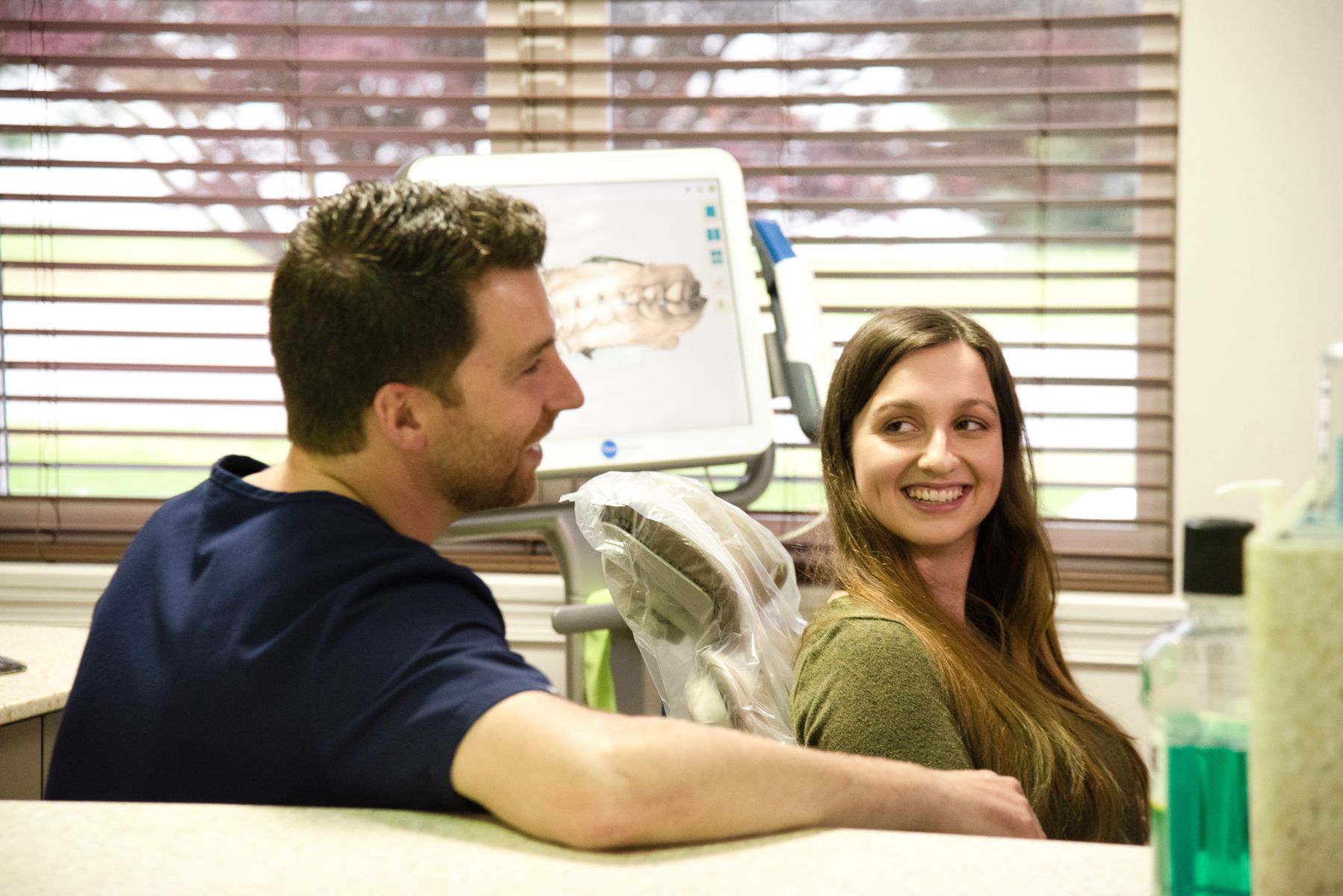Did you know that Alba Orthodontics has been creating beautiful smiles in the Mechanicsburg community for more than 25 years? In that time, we’ve helped patients of all ages improve their oral health, including straighter teeth and a fully functional bite. But no matter how experienced our team is, the best results won’t last forever without a bit of help!
That’s why retainers are an essential part of every post-treatment plan. Wearing a retainer regularly will keep newly straightened teeth in place for years to come, but many patients underestimate the importance of this appliance. Whether you’re a patient with us now or may be in the future, you should understand what retainers do and how to take good care of them! Keep reading to learn more.
First things first: what isa retainer?
As we mentioned above, a retainer is an orthodontic appliance that keeps teeth in their new positions following treatment. Retainers help patients avoid something called “relapse,” which refers to the natural tendency our teeth have to drift over time. While relapses occur mainly in the late teens and early twenties, they can happen at any time. This is true even for those who have had orthodontic treatment.
Why? Teeth have long memories! They always remember their original places in the mouth, and if there’s no pressure on them, they’ll begin shifting back towards those spaces. During the active phase of treatment, we can achieve that pressure with braces or clear aligners. Once this initial phase is complete, we’ll switch to using a retainer to prevent the teeth from drifting towards their previous positions.
Once braces have been removed or the last clear aligner is used, patients will be given a customized retainer for their post-treatment needs. This should always be worn as directed! Failure to wear a retainer regularly can undo all the progress made and may eventually require touch-up treatment. It may even be necessary to repeat the entire treatment process in some severe cases. Let’s look at how to care for a retainer so it can do its job and keep your smile in place! 
Caring for retainers
Once you complete treatment, your retainer becomes your new BFF. That means it will spend a lot of time in your mouth, where it will be exposed to all the bacteria, plaque, and food debris hanging around in there. Our doctors will let you know exactly how often you need to clean your specific retainer, but it will usually be daily. We know that there will be days you’ll forget! This isn’t a big deal as long as it’s just an occasional thing, but you should know the signs that indicate your retainer is overdue for a cleaning, including a bad taste or smell, a cloudy appearance, or white spots.
Before you decide on a cleaning routine for your retainer, you’ll need to know what kind you have. There are three main types of retainers, which we’ll outline below.
Fixed retainers
A fixed retainer is composed of a thin wire that is positioned across the interior surface of the lower or upper front teeth and bonded into place with glue. This set-up is incredibly efficient at keeping newly straightened teeth in place, and fixed retainers tend to have the best outcome overall. Patients also never have to remember to wear it or worry about losing it since it stays in the mouth!
Good oral hygiene is important for everyone, but you’ll need to pay special attention to brushing and flossing around a fixed retainer. Angle the toothbrush properly and clean the surface of every tooth, taking special care with the area behind the fixed retainer. You’ll want to brush thoroughly but gently to ensure the metal wire isn’t damaged.
Flossing with a fixed retainer can take a bit of practice! Dental tools like oral irrigators, floss threaders, and orthodontic dental floss can help clean the hard-to-reach areas between the wire and the teeth. Our team will also be happy to provide you with advice or give you a demonstration if needed!
Avoid or moderate the consumption of certain foods, including crunchy or sticky snacks, as these can damage a fixed retainer. Visiting your dentist regularly will help keep plaque and cavities under control, so you can have a healthier smile as well as a straighter one.
Hawley retainers
Hawley retainers are one of the most recognizable orthodontic appliances we have outside of metal braces. They’re kept in place by a wire that wraps around the teeth, which is then combined with an acrylic arch that rests against the roof of the mouth. While many orthodontists have been moving away from Hawley retainers in recent years, they can still be useful for some patients.
If you’re given a Hawley retainer, you’ll need to clean it daily using a soft-bristled toothbrush and non-abrasive toothpaste. This will help remove plaque and bacteria from it, but if you’re looking for a deeper clean, you can also soak the retainer in denture cleaner for a short period. Be sure to keep your retainer away from extreme temperatures! Washing it in very hot water or leaving it in a hot car can warp the material and affect how the retainer fits in your mouth.
Essix retainers
Essix retainers are popular with orthodontists and patients alike. They’re made from a transparent plastic material and look similar to the clear aligners we use to straighten teeth. Each retainer is molded to the unique shape of the patient’s mouth and can last for quite a long time with the proper care. Luckily, this process is very straightforward!
Brush and floss your teeth before you put your retainer in. When you take it out, be sure to clean it right away so saliva can’t dry on the trays. You can do this by brushing your Essix retainer with lukewarm water and a soft-bristled toothbrush. You can also mix mild dish soap with the water and scrub gently using a toothbrush or denture brush.
Grooves can sometimes form in this type of retainer, but running a cotton swab over them will help clean these areas more effectively. Essix retainers can be soaked in a denture solution like Efferdent or Polident for a deeper clean. There are also cleaning solutions designed specifically for use with clear retainers.
One slight downside to any removable retainer is how easy they are to misplace or lose! Whenever you take your retainer out, be sure to put it in the appropriate case and keep it in a safe place.

Protect your smile from shifting with a retainer from Alba Orthodontics
Most experts now agree that wearing some type of retainer is the best way to enjoy a lifetime of straight smiles! Although this recommendation can seem overwhelming at first, most retainer wear is part-time and will become part of your daily routine in no time. To learn more about how retainers work or schedule a FREE consultation with Drs. Fred and Jeff Alba, get in touch with our Mechanicsburg office today!
